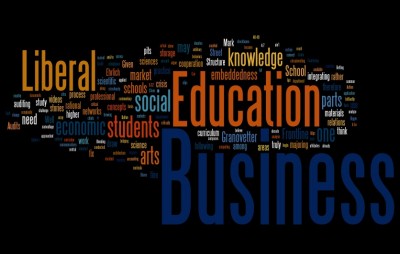
This is the second installment of a series on business schools. The first was Are Business Schools to Blame (4/7)?
Does the business school need saving? Its “soul”? Is there a crisis brewing where there is no faith in business knowledge or are the current economic times the result of periodic blips or a few rogue players who aren’t following the “rules”? It depends on who you talk to. I believe the business school is here to stay, but the challenges for competing business schools will be ones of legitimacy in the eyes of the public and relevance in an increasingly global higher education market.
In January, Tom Ehrlich offered a commentary on business education entitled The Business of Business Education is More than Business. Ehrlich makes this keen observation::
“The application of critical analysis and good judgment to economic issues is important for all students, but surely it is essential for students majoring in business. Business leaders need to understand the historical, cultural, scientific, organizational, and political contexts of their domain, and these are best gained through liberal education. This need raises for us a question: to what extent are undergraduates majoring in business on campuses across the country gaining these and the other attributes of a strong liberal education?”
I’m all for liberal education infused in the business curriculum, but my vision is less about checkboxes of general education requirements and more about integrating or bridging the liberal arts into the curriculum.
“One point to consider is that, for the most part, business curricula have not ’embedded’ liberal arts into the student’s program of study, but rather have isolated it, by separating it from the business education process.”
–Chew & McInnis-Bowers (2004), “Blending liberal arts & business education”
I think one of the ways that higher education provides value is helping students connect concepts and synthesize knowledge, but my experience is that it takes quite a bit of work to truly incorporate the liberal arts and social sciences into syllabi, let alone curriculae. I’m talking about the epistemology of business. Countering the received-view is no mean feat. Given my own liberal education {along with 3 business degrees}, I can draw upon Kuhn’s The Structure of Scientific Revolutions. Some may argue that the received views of business and business education are fine. There is no crisis at hand, in Kuhnian terms, leading to “revolutionary science”.* Why fix what ain’t broke? Well, that’s one way to go.
The fact of the matter is that the problems/issues of the financial sector have been in the news for a decade in mainstream sources like PBS Frontline.
- Betting on the Market (1997) {see clips here}
- Dot Con (2002)
- Bigger than Enron (2002)
- The Wall Street Fix (2003)
- The Secret History of the Credit Card (2004)
These stories can help all students to think critically about the business of business. {I tell mine to even have a healthy skepticism of the Frontline videos.} These videos are excellent points of departure for the interdisciplinary integration of liberal learning and business. One common thread of most of these Frontline stories is an emphasis on the social relations of markets. Enter Stanford Sociologist, Mark Granovetter, who published a very influential sociology paper on “embeddedness” in 1985. Embeddedness denotes a situation where economic relations between individuals and/or firms are couched in actual social networks, as opposed to an idealized market of rational behaviors. Granovetter cites a study of the business practice of auditing that illuminated unpredicted results::
“Audits of parts by the central office were supposed to be conducted on a surprise basis, but warning was typically surreptitiously given. The high level of cooperation shown in these internal audits is suggested by the following account: ‘Notice that a count of parts was to begin provoked a flurry among the executives to hide certain parts and equipment . . . materials not to be counted were moved to: 1) little-known and inaccessible spots; 2) basements and pits that were dirty and therefore unlikely to be examined; 3) departments that had already been inspected and that could be approached circuitously while the counters were en route between official storage areas and 4) places where materials and supplies might be used as a camouflage for parts. . . . As the practice developed, cooperation among the [department] chiefs to use each other’s storage areas and available pits became well organized and smoothly functioning’ (Dalton 1959, pp. 48-49).
Dalton’s work shows brilliantly that cost accounting of all kinds is a highly arbitrary and therefore easily politicized process rather than a technical procedure decided on grounds of efficiency.”
–Mark Granovetter (1985), “Economic Action and Social Structure: The Problem of Embeddedness”
A-ha! While auditing may serve a rational economic function to increase efficiencies or ensure compliance, the reality is that managers were circumventing this using their social networks. The same holds true for malfeasance on a larger scale, evident in many of the Frontline videos.
The interfaces of science, the fine arts, architecture, communications, the humanities, and the social sciences with business can provide a “two-way learning street” to use Ehrlich’s term. Giving students liberal education knowledge truly integrated with applied professional knowledge should encourage more systems thinking. Students will be familiar with complexity and have a wide array of concepts to draw from to analyze problems.
Moving towards the integration of liberal knowledge with professional education may not change the world, but in my opinion, as business educators, it’s doing our job.

Comments